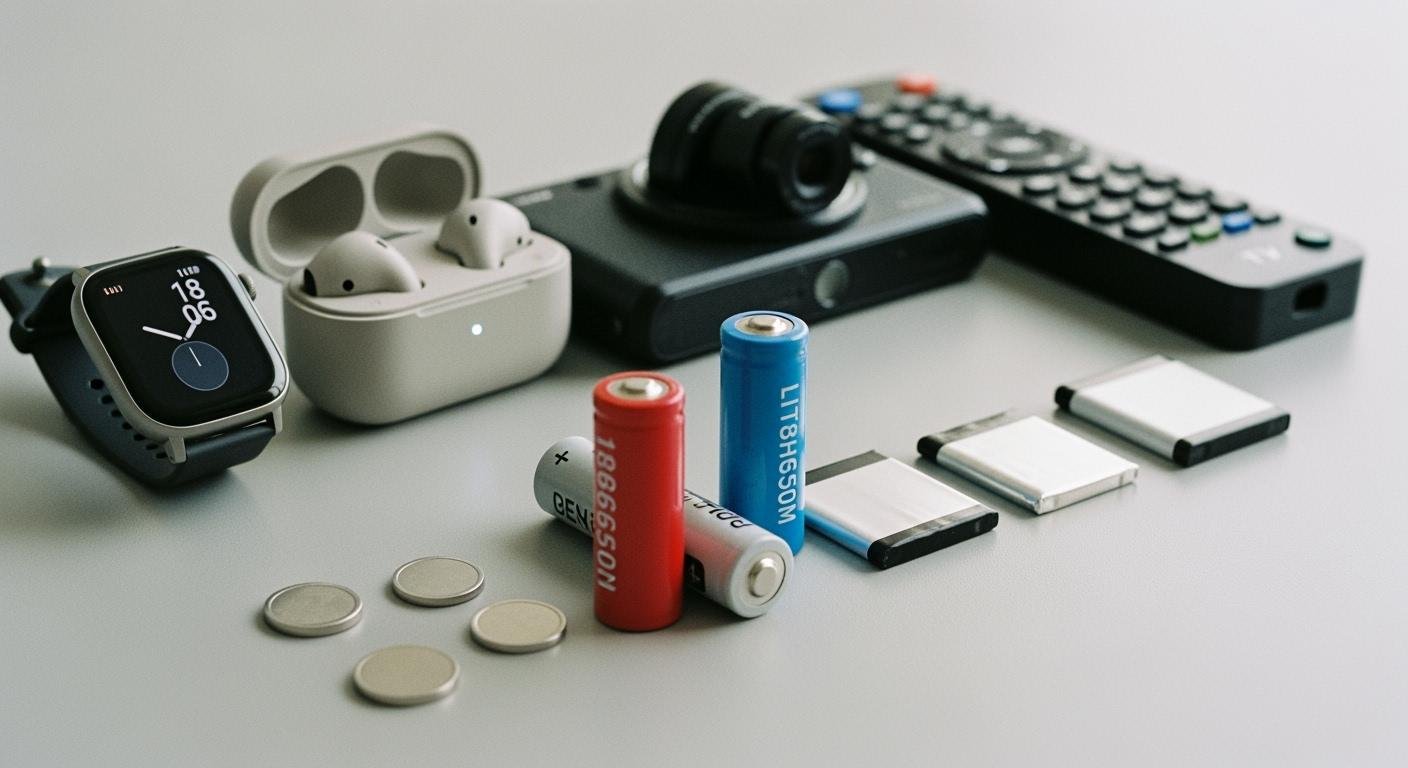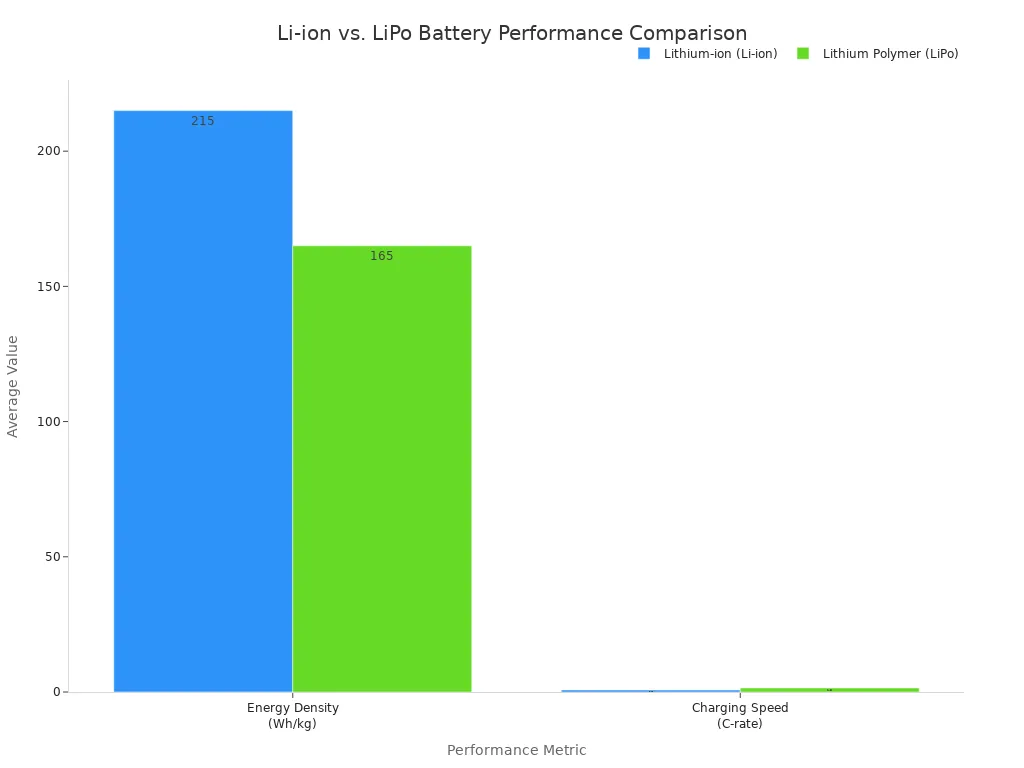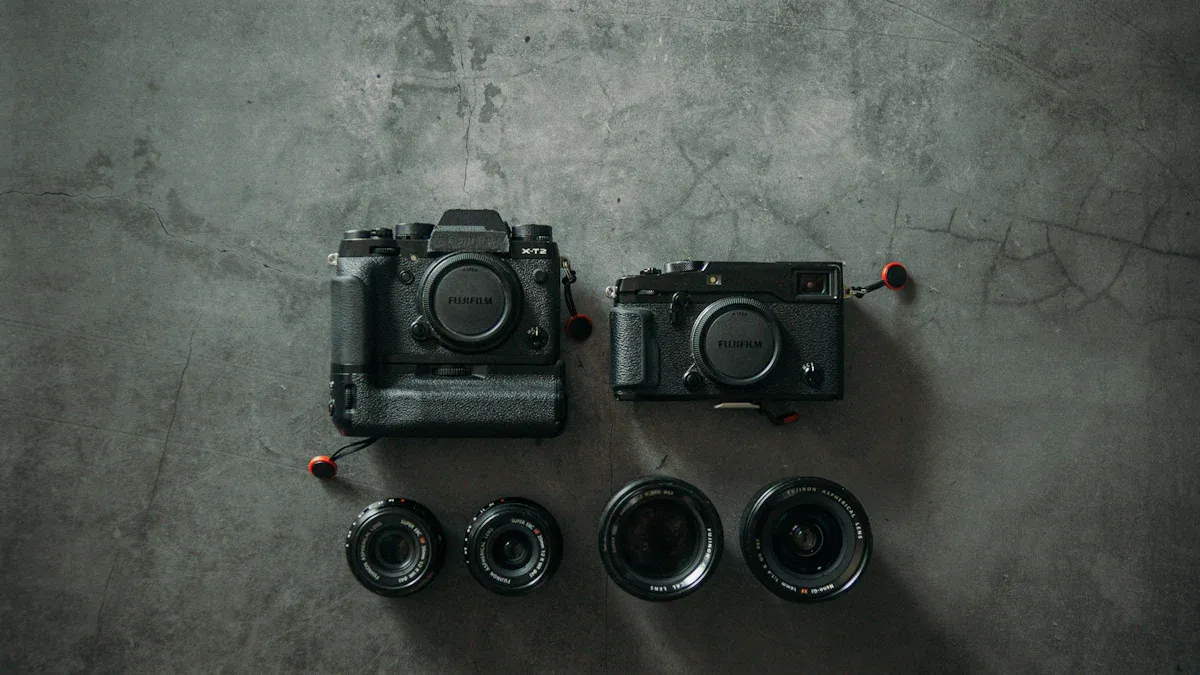
Your favorite portable device has a dead lithium battery. It’s a common problem for millions of people. The global market for portable devices is enormous and continues to grow.
| Metric | Значение |
|---|---|
| Market Size in 2024 | USD 140.96 Billion |
| Projected Market Size by 2032 | USD 314.46 Billion |
| CAGR (2025-2032) | 10.55% |
Finding a new lithium battery for these devices is simple. This guide helps you choose lithium batteries with confidence. Success requires checking the lithium type, matching specifications, and verifying safety for your portable devices.
How to Choose Lithium Batteries
Your journey to find the right power source starts with what you already have. Examining your old battery and device provides the essential clues you need. These first steps are critical to help you choose lithium batteries correctly.
Check the Old Battery and Device
You should first inspect the old lithium battery for any warning signs. A damaged battery is a serious safety risk. Look for these indicators of failure:
- A swollen or bloated case, which signals dangerous internal gas buildup.
- Corrosion or wetness around the terminals.
- Any cracks or warping in the battery’s shape.
Safety Tip: Never use a sharp object to remove a battery. Puncturing a lithium battery can cause a fire or explosion. Always handle old batteries with care.
The device itself often has the model number printed on the back or inside the battery compartment. This information is your key to finding compatible portable power solutions.
Consult Your Device’s Manual
Your device’s manual is the most reliable source of information. It specifies the required battery technology, voltage, and capacity. If you lost the manual, you can usually find it online.
- Find the brand and model number on your device. A helpful tip is to take a picture with your phone and zoom in to read tiny print.
- Visit the manufacturer’s website and look for a “Support” section.
- Use a search engine with terms like
"[Device Name] manual PDF". - Check specialized websites like ManualsLib, which archive millions of manuals for various devices.
Understanding Lithium Battery Types
Most portable devices use one of two main lithium battery types: Lithium-ion (Li-ion) or Lithium Polymer (LiPo). Both lithium battery types offer high energy capacity and are lightweight, making them ideal for portable power applications. However, they have key differences. Understanding these lithium battery types helps you make an informed choice.
Lithium-ion batteries often have a higher energy density, typically between 150-250 Wh/kg. This means they can store more power for their size. Lithium-ion battery packs are usually encased in a rigid metal shell.
Lithium Polymer batteries offer more flexibility. Their soft, pouch-like construction allows them to be made in various shapes and sizes. This makes them perfect for ultra-slim portable devices. While their energy density is slightly lower, they can handle higher discharge rates. This battery technology is common in drones and wearables. The choice between lithium battery types depends on your device’s design and power needs.
| Характеристика | Литий-ионный (Li-ion) | Литий-полимер (LiPo) |
|---|---|---|
| Плотность энергии | Higher (more capacity) | Нижний |
| Форма | Rigid, cylindrical/prismatic | Flexible, slim pouch |
| Стоимость | Generally lower | More expensive |

Knowing these differences in lithium-ion batteries and other lithium battery types is essential. It ensures you select a battery that provides the right balance of capacity and performance for your portable devices. This knowledge is vital for all portable devices, from simple gadgets to complex lithium-ion battery packs.
Key Specs for Portable Devices

After you identify the battery type, you must match its technical specifications. These numbers are not just suggestions; they are requirements for the safety and performance of your portable devices. Getting them right is essential for your portable power solutions.
Match the Voltage (V) Exactly
Voltage is the one specification you must match perfectly. Think of it as the electrical pressure your device needs to operate. Using the wrong voltage can cause serious problems.
Warning ⚠️: Аккумулятор с higher voltage than required can burn out the electrical system in your devices. A battery with a lower voltage can lead to overcharging and permanent damage. Always choose a lithium battery with the exact same voltage as the original.
Consider Capacity (mAh) for Runtime
Capacity, measured in milliampere-hours (mAh), tells you how much energy the battery can store. A higher mAh rating generally means a longer runtime for your devices. You can often choose a lithium battery with a higher capacity than your original for more usage time. However, this choice involves a trade-off. Increased capacity usually results in a larger and heavier battery, which might not fit your device or make it less portable.
Balance Size and Weight
The physical size and weight of the lithium battery are crucial for portable devices. You must find a balance between capacity and portability. A battery’s weight is directly related to its capacity and energy density.
The formula for this relationship is:
Battery Weight (kg) = Battery Capacity (Ah) × Nominal Voltage (V) / Energy Density (Wh/kg)
For some portable devices, even a small increase in weight significantly impacts usability.
- Wearable Devices: Heavier batteries in devices like night vision goggles или portable medical probes can cause user fatigue.
- Handheld Tools: Lighter lithium batteries improve efficiency and reduce strain for operators using portable tools.
Note the Cycle Life and Shelf Life
Cycle life defines the battery’s lifespan. It is the number of full charge/discharge cycles a battery can handle before its capacity drops below 80% of its original rating. One cycle is completed when you use 100% of the battery’s capacity. This can happen in a single charge or over multiple partial charges. A higher cycle life means the battery will last longer. Shelf life refers to how long the battery holds its charge while in storage. Good battery technology ensures a long and useful life for your portable power applications.
Verify Physical Fit and Connector

You have the right battery type and specs. Now you must confirm the new lithium battery will physically fit your device. A battery that is too large is useless. A battery with the wrong connector will not work. This step ensures your new power source connects and fits perfectly.
Measure the Battery Dimensions
A battery model number does not always guarantee a perfect fit. Manufacturers can make small changes over time. You should always measure the physical dimensions to be certain.
- Use a ruler or calipers to measure your old lithium battery’s length, width, and height.
- Measure the battery compartment inside your portable device in the same order (length x width x height).
- Use both the battery model and its dimensions to select the correct replacement.
Pro Tip: 📏 Leave a tiny bit of extra space in your measurements. This accounts for any slight variations and makes installation easier for your portable devices.
Confirm the Connector Type
The connector is the plug that links the lithium battery to your devices. Your new battery must have the exact same connector as the old one. Mismatched connectors will prevent your portable devices from receiving power. Some common connectors for portable electronics include:
- JST Connectors: These are small and reliable. You often find them in compact devices like cameras and medical equipment.
- Barrel Jack Connectors: These are common for connecting power adapters to many types of devices.
- XT30 Connectors: These compact plugs handle more power. They are popular in small drones and other high-performance portable applications.
If you need a unique configuration, a custom battery pack might be your best solution. You can find visual guides online to help you identify connectors by their shape and size. Understanding the distinct features of each connector is crucial for compatibility and safety in your devices.
Prioritize Battery Safety and Quality
Choosing a battery is not just about power. Your safety is the most important factor. Low-quality or counterfeit lithium-ion battery packs often lack essential safety features. These missing parts, like Current Interrupt Devices (CID), create serious risks. Poorly made batteries can cause thermal runaway, leading to fire and property damage. You must prioritize quality to ensure the safety of your devices and yourself.
Look for Safety Certifications
Certifications show that a battery meets specific safety standards. Reputable manufacturers test their products to earn these marks. You should always look for them on the battery or its packaging. These logos are a sign of good battery technology and reliable safety features.
Pro Tip: 🧐 You can verify a UL certification mark on the official UL website. This check confirms the battery’s safety claims are authentic.
Key international certifications ensure quality for portable power applications.
| Сертификация | Назначение | Global Impact |
|---|---|---|
| UL | Evaluates battery safety and performance | Internationally recognized |
| CE | Ensures compliance with EU safety rules | Important for selling in Europe |
| IEC | Creates worldwide rules for safety | Accepted worldwide, promotes consistency |
| UN38.3 | Ensures safe shipping | Vital for international logistics |
One key standard is IEC 62133. It sets safety requirements for portable sealed secondary cells.
Select Reputable Brands and Sellers
You should buy from trusted brands and sellers. Counterfeit lithium batteries are a major problem. They often have inferior materials and lack proper safety features. This compromises the safety of your portable devices. Be cautious of sellers with questionable practices.
Watch for these warning signs:
- Prices that seem too good to be true.
- Batteries claiming much higher capacity than original versions.
- Online sellers who disappear and reappear under new names.
A cheap, uncertified lithium battery is not worth the risk. Stick with well-known brands to get reliable lithium-ion battery packs with proper safety features.
Check the Manufacturing Date
A lithium battery’s life begins the day it is made. Its performance degrades over time, even in storage. You should always check the manufacturing date, often labeled “Date of MFG“. A newer battery will give you a longer service life.
You can find the date printed on the battery’s case. Some codes can be complex. You can use online tools or QR code scanner apps to decode them. Buying a fresh battery ensures you get the best performance and longevity for your portable devices.
You can now choose lithium batteries with confidence. This checklist simplifies finding the right portable power for your devices.
- Type & Specs: Select the correct lithium type. Match the voltage exactly and choose a battery capacity that meets your daily needs.
- Fit: Confirm the physical size and connector match your portable devices.
- Quality & Safety: Prioritize safety. Buy certified lithium batteries from trusted sellers for a longer lifespan and better efficiency.
When you choose lithium batteries carefully, you ensure your portable devices run safely and effectively.
ЧАСТО ЗАДАВАЕМЫЕ ВОПРОСЫ
Can I use a battery with a higher mAh rating?
Yes, you can use a battery with a higher milliampere-hour (mAh) rating. This will give your device a longer runtime. You must make sure the new battery still fits inside your device’s battery compartment, as higher-capacity batteries are often larger.
What if I don’t have the old battery to check?
You should consult your device’s user manual for the correct battery specifications. If you lost the manual, you can search for it online. The manufacturer’s website is the best place to find this official information for your portable devices.
Are LiPo batteries safer than Li-ion batteries?
Both battery types are safe when you buy them from reputable brands. Safety depends on quality manufacturing and proper handling, not the battery type.
Always choose batteries with safety certifications like UL or CE to ensure they meet high safety standards.
How should I store a spare lithium battery?
You should store your spare lithium battery in a cool, dry place. Keep it away from direct sunlight and metal objects. For long-term storage, it is best to keep the battery at around a 50% charge level to preserve its health.

